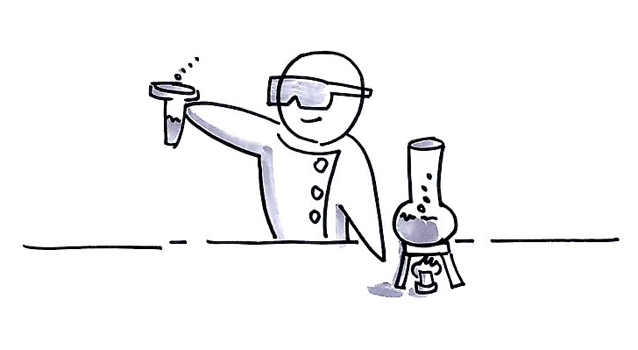
There's a lot of talk about applying the scientific method to entrepreneurism. It's at the heart of Eric Ries' Lean Startup, which he talks about recently at the Wired Business Conference. But exactly how do you exactly apply it to a product?
First, let's take a look at what Eric is really talking about. He's really advocating learning. To learn as much about your products as possible, to learn whether or not there is, in fact, a customer at the other end willing to pay for it. After all, he learned the hard way the damage not figuring out who your users are can cause. His early startup crashed and burned because he didn't figure out who would use and pay for his product. He says building a robust product and having a splashy launch could sink your startup if there isn't a customer to pay for it. Which is why he urges startups to apply the scientific method and view learning as a measure of progress.
Like a scientist, he suggests, you've got to test your ideas and continue to test them through hypothesis and experimentation, gathering feedback along the way.
The Scientific Method Break Down
While it's not something we use all the time here at ZURB, we have applied the scientific method in our approach to product design. Let's delve a bit deeper, looking at how we applied it when it came to eliminating a feature from Notable:
- Make an Observation — Notable once had four features that allowed user to provide annotations for not only captures of websites, but code, copy and SEO content as well. The SEO tool let managers or SEO experts provide feedback on SEO data of a website, breaking out the metadata. However, we had observed that not many people were actually using the feature and preferred leaving notes on screen captures. Which lead us to ...
- Ask a Question — We asked how many people were actually using the feature, along with the coding and copy annotation feature.
- Form a Hypothesis — Our hypothesis was: "No one was using the SEO feature. Now we had to test it."
- Test Our Hypothesis — To test our hypothesis, we looked through the database of users, separating those from paid accounts and free accounts. We found that a small percentage of users were using the SEO notes with 98% of users preferring to leave notes on screen captures.
- Prove or Disprove Hypothesis — The data proved our hypothesis that no one was really using the SEO feature. It also showed that more people preferred annotating screen captures. So we decided to drop the SEO, copy and code features and focus on the visual feature of Notable. We decided it was more important to make one really good feature that everyone would use rather than four features, of which only one was really used.
As you can see, the scientific method was helpful in solving a particular problem. While it is really useful for testing out theories and hypothesis, the one thing we hope that you remember the most is that you have to test out your ideas. The scientific method isn't the only way, but it's one of the tools at your disposal to learn if your ideas will work out in the wild.